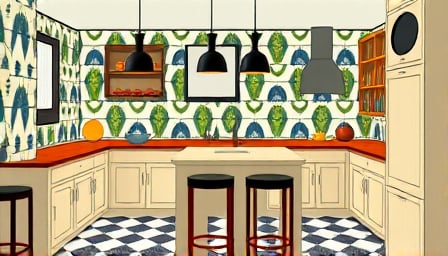Nobia AB: A Tumultuous Journey in the Kitchen Interior Market
In the ever-evolving landscape of the consumer discretionary sector, Nobia AB stands as a testament to both resilience and vulnerability. As a Swedish powerhouse in the household durables industry, Nobia has carved out a niche in developing, manufacturing, and marketing kitchen interiors. However, recent financial indicators suggest a company at a crossroads, grappling with market pressures and internal challenges.
Financial Turbulence: A Closer Look
As of July 13, 2025, Nobia’s stock closed at 5 SEK, a stark contrast to its 52-week high of 6.2 SEK on August 28, 2024. This decline is not just a number but a reflection of investor sentiment and market dynamics. The 52-week low of 2.86 SEK, recorded on April 6, 2025, underscores the volatility Nobia faces in a competitive market. With a market capitalization of 3.49 billion SEK, the company’s financial health is under scrutiny, especially given its negative price-to-earnings ratio of -2.83. This negative ratio is a red flag, signaling potential losses and raising questions about Nobia’s profitability and future growth prospects.
Strategic Operations: Strengths and Weaknesses
Nobia’s operational strategy involves producing kitchen interiors in Sweden, Norway, Denmark, Finland, the United Kingdom, and Germany, with sales spanning across Europe. This extensive production network is both a strength and a potential liability. On one hand, it allows Nobia to leverage diverse markets and tap into local consumer preferences. On the other hand, it exposes the company to geopolitical risks, supply chain disruptions, and varying economic conditions across these regions.
The company’s reliance on its own specialist kitchen stores and franchised showrooms for sales is a double-edged sword. While it provides control over the customer experience and brand representation, it also limits market reach compared to competitors who may utilize broader distribution channels.
Market Position: A Critical Analysis
Nobia’s position in the household durables sector is precarious. The company’s focus on kitchen interiors, while specialized, may limit its ability to diversify and adapt to changing consumer trends. As sustainability and smart home technologies gain traction, Nobia must innovate or risk obsolescence. The negative price-to-earnings ratio is a stark reminder that without strategic pivots, the company could face prolonged financial difficulties.
Looking Ahead: Challenges and Opportunities
For Nobia, the path forward is fraught with challenges but not devoid of opportunities. The company must address its financial woes by improving operational efficiency and exploring new revenue streams. Diversification into related product lines or expanding into emerging markets could provide much-needed growth. Additionally, embracing digital transformation and sustainability could enhance Nobia’s appeal to modern consumers.
In conclusion, Nobia AB stands at a critical juncture. The company’s ability to navigate financial turbulence, operational challenges, and market dynamics will determine its future trajectory. Investors and stakeholders alike will be watching closely as Nobia charts its course in the competitive landscape of household durables.
